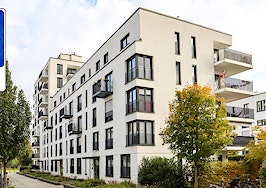 Property investors rode a wild wave during the pandemic, with the short-term rental market stopping, then restarting, and property prices in many second-home markets soaring. What does the future hold for new second-homeowners and for managers of more robust property portfolios? We’ll explore that and more, all May long, at Inman.
Property investors rode a wild wave during the pandemic, with the short-term rental market stopping, then restarting, and property prices in many second-home markets soaring. What does the future hold for new second-homeowners and for managers of more robust property portfolios? We’ll explore that and more, all May long, at Inman.
Since 1990, the EB-5 Immigrant Investor Program has been a gateway for qualified foreign investors (who must pass security background checks and meet specific capital and job creation requirements) to obtain legal permanent U.S. residency.
The program is an incredibly efficient project financing tool, ensuring job creation and underpinning critical long-term community and economic development.
The program is a catalyst for hundreds of development projects, hundreds of thousands of jobs, and it was an impactful part of the country’s economic recovery after the 2008 recession. Now, this job-creating juggernaut is set to end on June 30, 2021, unless Congress acts.
Following the 2008 mortgage-backed securities financial crisis that heavily impacted the real estate industry, bank financing options for real estate projects became expensive and scarce. Many developers turned to alternative financing methods, including private equity, and many sophisticated real estate developers noticed a great and previously unknown niche financing tool: EB-5 capital.
History tells us the program is not in jeopardy. In fact, it has been reauthorized 19 times as part of either the Department of State’s or the Department of Homeland Security’s annual spending measure. This time, however, reauthorization is tenuous.
At the end of 2020, the program’s traditional reauthorization language was “decoupled” from its traditional spending bill moorings and given its own termination date. This means it’s not only set to expire on June 30, but now it also lacks the assuredness provided by a must-pass appropriation bill.
From a developer’s standpoint, EB-5 investments are structured like a mezzanine or senior construction loan. However, they are usually cheaper than bank loans or private equity assistance because EB-5 investors are not primarily focused on return of investment. Instead, most EB-5 investors care primarily about their immigration goals and their capital’s safety.
Additionally, EB-5 investment terms are typically more flexible. In the case of a mezzanine loan, the EB-5 loan terms closely follow the senior lender’s terms and either way, because EB-5 lenders do not have to follow rigid bank policies, investment terms are often tailored toward the project’s needs.
Given its flexibility, reliability and low cost, EB-5 financing has become a powerful option for many looking to develop in the residential real estate space. In fact, between 2010 and 2015, over $1.1 billion in EB-5 capital was invested in construction projects for residential real estate across the country.
For EB-5 investors, residential developments and mixed-use developments with a residential component are very common and sought after because globally, they are perceived as a resilient asset class, ensuring their investments’ safety and a successful immigration process.
Overall, the program has provided more than $41 billion in capital investment from across the globe to fund various developments and support American businesses — all at no cost to the U.S. taxpayer. This capital deployment created at least 820,000 job for U.S. workers, a vital contribution following the 2008 recession, when residential real estate projects had a very tough time obtaining reasonable financing.
Right now, as more and more millennials enter their 30s, there is a surge in demand for multifamily housing presenting an ideal opportunity for the multifamily sector to flourish.
With less than 90 days until the program expires, time is of the essence. It is critical that the public, the residential and commercial real estate sector, and elected officials across the country understand the EB-5 Program’s benefits, the jobs it creates and saves, and the potential it has to buttress the post-COVID economic recovery.
If you want to support the program’s reauthorization, take the simple of step of joining the Coalition to Save and Create Jobs. It is easy, it is free, and it is impactful.
Aaron Grau is the executive director of Invest in the USA (IIUSA) in Washington, D.C. Connect with him on Twitter or LinkedIn.













